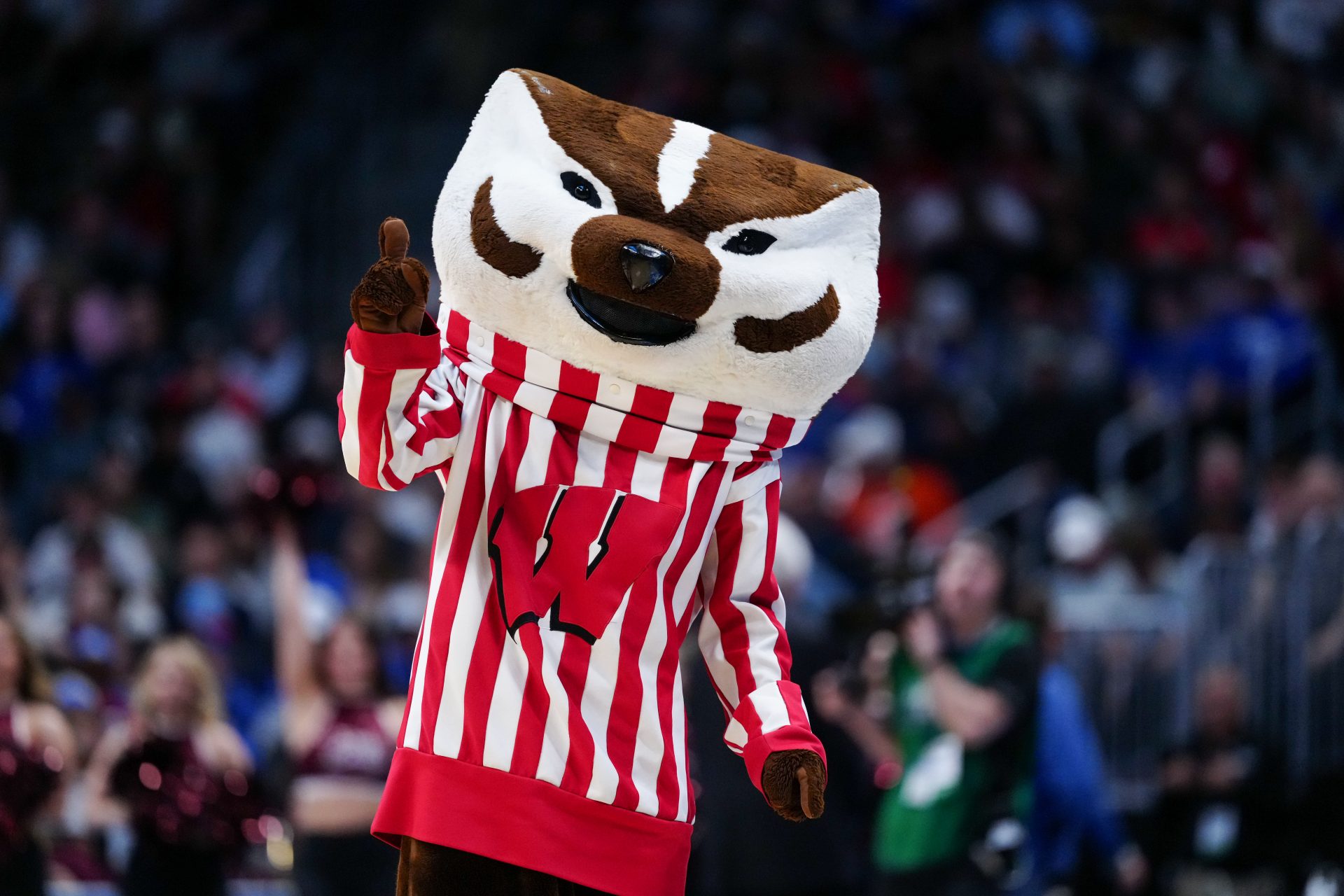Every college has its mascot, but not all of them can say their mascot defines an entire state. Well, the University of Wisconsin-Madison, Bucky Badger, isn’t just a symbol for athletics.
He’s part of a long-standing history who was born from the grit of 19th-century miners and brought to life by students who turned him into the legendary figure he is today. So, how exactly did a badger come to represent a university, a state, and a culture?

What Is the Wisconsin Badgers Mascot?
Wisconsin’s mascot is Buckingham U. “Bucky” Badger, a character recognized for his striped cardinal and white sweater and determined scowl. You’ll find him hyping up crowds at football games. He often showcases his dancing skills at basketball halftime shows.
And if it weren’t enough, he also appears on merchandise sold all over Wisconsin. But Bucky isn’t just a costumed performer. He represents values of toughness and state pride.
The decision to make a badger the school’s mascot is rooted in Wisconsin history. In the early 1800s, lead miners in southwestern Wisconsin often dug into hillsides for shelter during harsh winters. This burrowing behavior reminded locals of badgers, and the state earned the nickname “The Badger State.”
That nickname stuck with them and was reflected when the university adopted its official mascot in 1889. Well, it’s safe to say that it made perfect sense to honor the state’s legacy.
Initially, the university used a live badger at sporting events to engage the crowd. However, the plan quickly backfired. The animal was aggressive and had a habit of escaping its handlers.
Eventually, the badger was sent to live at the Madison Zoo. Looking for alternatives, the school briefly tried using a raccoon named “Regdab” (which is “badger” spelled backward), but that didn’t catch on either.
The version of Bucky we recognize today started to come together in the 1930s. According to Gwen Schultz in her book “The Bucky Badger Story,” the first cartoon version of Bucky appeared in 1930. And a decade later, a drawing of Bucky wearing a Wisconsin sweater solidified his new look. Still, the real transformation happened in 1949.
During the university’s homecoming football game that year, student Bill Sagal debuted a papier-mâché badger head costume, making him the first person to portray Bucky Badger in the flesh. That moment marked the official beginning of the costumed mascot we know today. It wasn’t long before Bucky became a fixture at games and university events.
Well, the costume and personality of Bucky evolved over the years. However, the core idea stayed the same: Bucky was tough, spirited, and always ready to get the crowd going. His energy matched the competitiveness of Wisconsin’s athletic programs, and fans quickly grew attached.
What Bucky Represents for the Wisconsin Badgers?
Bucky is more than a face on a t-shirt or someone in a costume. He represents a deep historical connection between the university and the state. The original miners who lived in hillside burrows showed determination, toughness, and a willingness to face challenges head-on. Those same values are reflected in the teams and students at Wisconsin.
Over time, Bucky became a statewide symbol. His presence at games builds excitement, and his image appears on everything from bumper stickers to campus signs. In 2006, Bucky was even inducted into the Mascot Hall of Fame. He officially secured his status as one of the most iconic figures in college sports.
KEEP READING: Highest-Paid College Football Coaches
Beyond sports, Bucky is present at campus events, community outreach programs, and even charity fundraisers. He’s become a central figure in what it means to be part of the Wisconsin community, whether you’re a student, alum, or lifelong fan.
Today, he stands as a reminder of where Wisconsin came from and what it continues to represent: resilience, tradition, and unity. Few mascots have a story as rooted in history or as embraced by a community. That’s what makes Bucky Badger unforgettable.
College Sports Network has you covered with the latest news, analysis, insights, and trending stories in football, basketball, and more!

